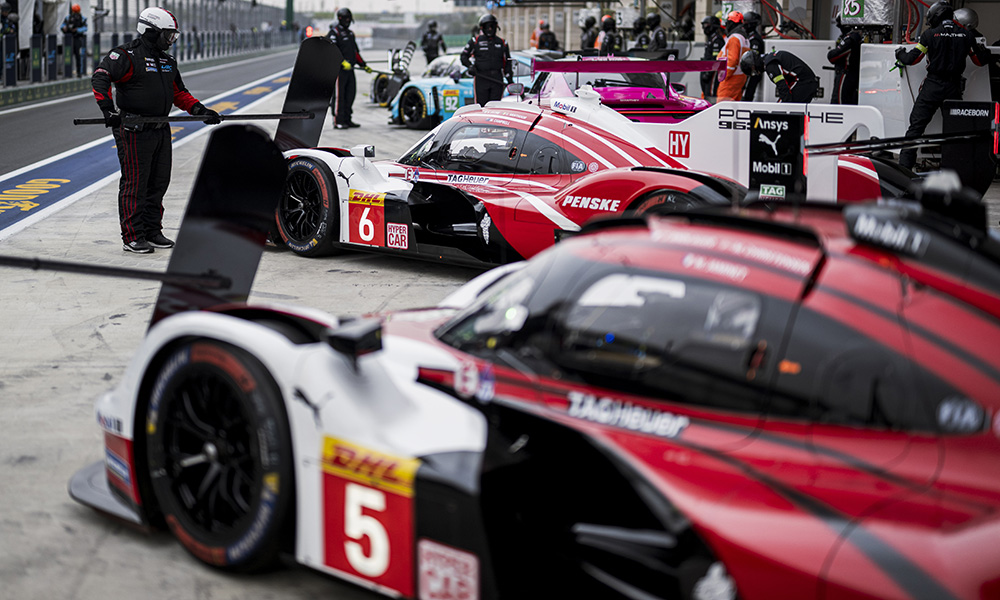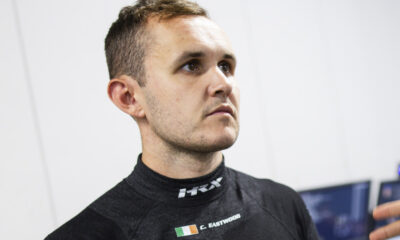
Photo: Charly Lopez/DPPI
Porsche Motorsport boss Thomas Laudenbach is hoping for a common platform for the FIA, ACO and IMSA’s next set of top-class prototype regulations, indicating the current LMH and LMDh ruleset is not ideal due to their differences in technology.
Currently confirmed through the 2029 FIA World Endurance Championship and IMSA WeatherTech SportsCar Championship seasons, the Hypercar/GTP class regulations have delivered a record number of manufacturers, although has been tough to balance the two distinct platforms.
Cars built to LMH regulations allow for open chassis and hybrid possibilities, while LMDh manufacturers must conform to a spec hybrid powertrain and use one of four licensed chassis constructors.
Speaking with selected reporters during last week’s WEC season-opening Qatar 1812km, Laudenbach indicated that “some kind of mixture” between LMH and LMDh could be the best way forward.
“If we generally talk about the next set of rules, and I’ve said this many times before, the first and most important thing here is that we get rid of these two different set of [platform] rules,” he said.
“No matter how you call it and no matter how it would look like, so we wouldn’t talk about LMH and LMDh anymore. I think that’s the first thing.
“It makes sense we operate with a limited amount of technical freedom in order to control our budgets, which is very important.
“Because if we come back to LMP1 times, which an engineer was great, but we know how we ended up.
“Without being very precise, maybe it’s some kind of mixture between LMH and LMDh, what we have today.”
While Porsche is one of seven manufacturers, so far, to have gone with the LMDh formula, WEC powerhouse squads Toyota and Ferrari have built Hypercars to the LMH ruleset.
Laudenbach said: “If we would talk to the LMH manufacturers today and would ask them, ‘What is exactly your point that you would need in the rules?’
“I only know it from public statements, like Ferrari said, ‘For us, it’s important that the chassis is ours.’ Which is fine. Let’s talk about it, if we can implement it [in the next set of regs].
“I don’t know about Toyota, but let’s look exactly at the points that the different manufacturers are saying, ‘This is what I would need’ and make a set of rules out of that.
“I think that’s extremely important because then we get at least have some of the discussions.”
Porsche Not Firm Believer in Hydrogen in “Foreseeable Future”
Laudenbach downplayed the prospects of moving towards hydrogen, a technology that the ACO has continued to push for and is planning to launch in selected WEC races by as early as 2028, amid the current Hypercar regulations cycle.
“The most important thing is that it’s relevant for what happens on the road,” said Laudenbach.
“We, and it’s not a secret, we’re watching hydrogen carefully, but so far we do not think that hydrogen will play a major role in the foreseeable future in passenger transportation.
“That’s very important, I’m talking about passenger transportation, and especially not in sports cars, and we’re a sports car manufacturer.
“This is a point that would not attract the series a lot for us if this is the route to go.”
Laudenbach argued that adding hydrogen to the mix of technologies could further complicate matters.
“This is something that worries me because, of course you can say, ‘We allow all sorts of different things’ which on the one side I think is in some ways sexy and interesting,” he said.
“But on the other side, we all see how difficult it is to balance these different technologies.
“In LMP1 we had this ‘Equivalence of Technology’ which honestly, I think, was handled quite good. But don’t forget, we had three manufacturers.
“Now we’ve got eight, nine, ten. The level is extreme now and the more and more difficult it gets.
“I would prefer not to have too many different routes, and then you have to make in some way equal again, because it’s just a very difficult task.
“Don’t get me wrong; I’m not saying anybody is doing a bad job, it’s just very difficult, especially when you have 20 manufacturer cars all on a very high level, with everybody going to the edge and everybody having professional teams.
“It becomes more and more difficult. Because more and more, these little differences decide between what happens on the track.
“I think in some way this is underestimated by many today, that they still think of ten years ago. No, it’s totally changed.
“One thing I am convinced is that it should be possible to have one common set of rules.
“In an ideal world, it’s the same like in the U.S.”
‘Budget Minded’ Discussions Between Manufacturers Need to Start Now
Laudenbach said that talks between manufacturers need to start now, in order to be ready for a potential 2030 debut.
“You’ve got to start now with discussions because it will take months, or even longer,” he said.
“It’s great what we have in the WEC. You go to the grandstands and see these 20-something [Hypercars] passing, this [gives] you goosebumps, no question.
“But we shouldn’t think that this is given forever. It’s not like we’re super, super stable. I don’t think we are.”
He pointed towards a “significant” increase in initial budgets for the current formula, spread across components, travel costs and other areas.
Laudenbach additionally suggested that manufacturers need to get together, outside of the FIA-organized technical working groups, to help lay the foundations for the next set of regulations.
“I would think the FIA and ACO would be thankful if the manufacturers are able to make some kind of common proposal,” he said.
“Maybe at the first step you do it without the sanctioning body just to get the view and maybe some kind of common idea from the manufacturers.
“Then you approach the FIA and ACO, which of course we have to do. Working groups and these kind of things are led by the sanctioning body.”


























